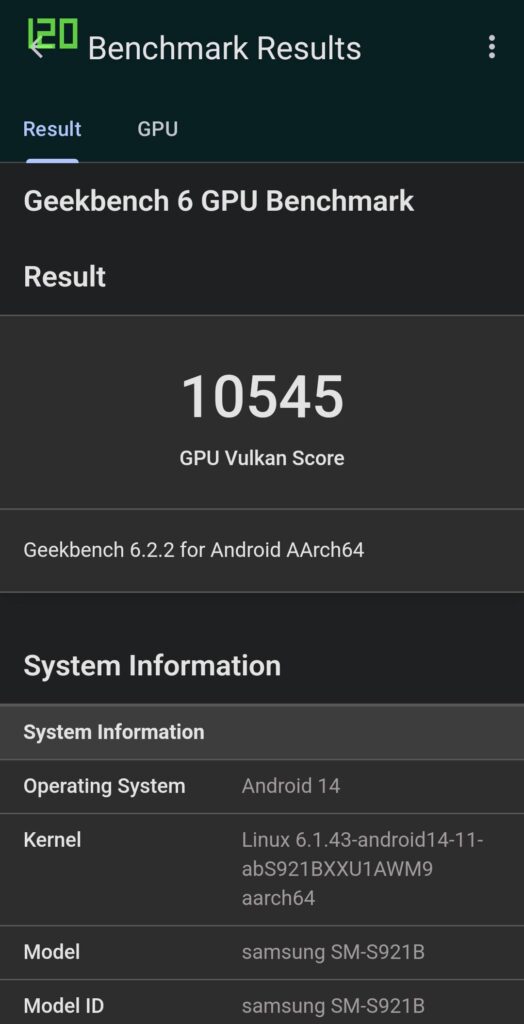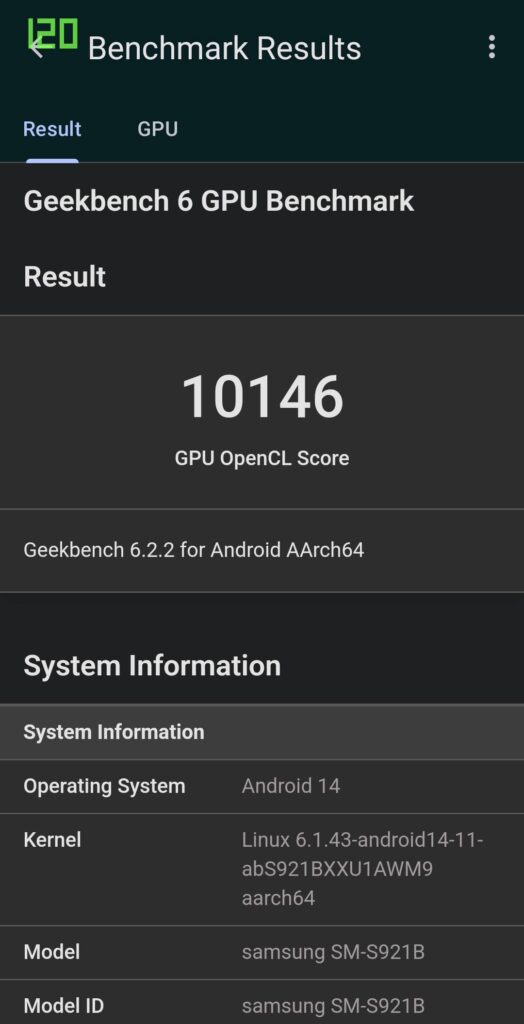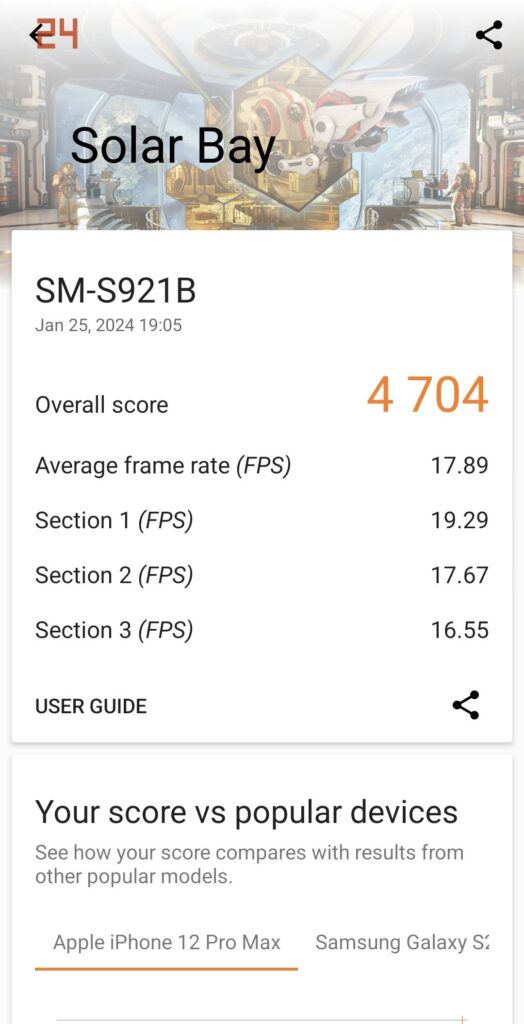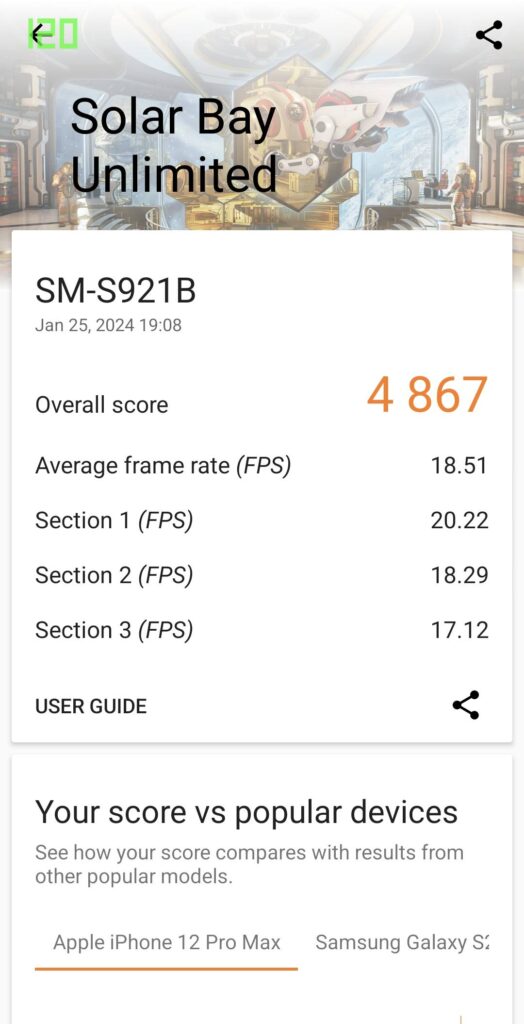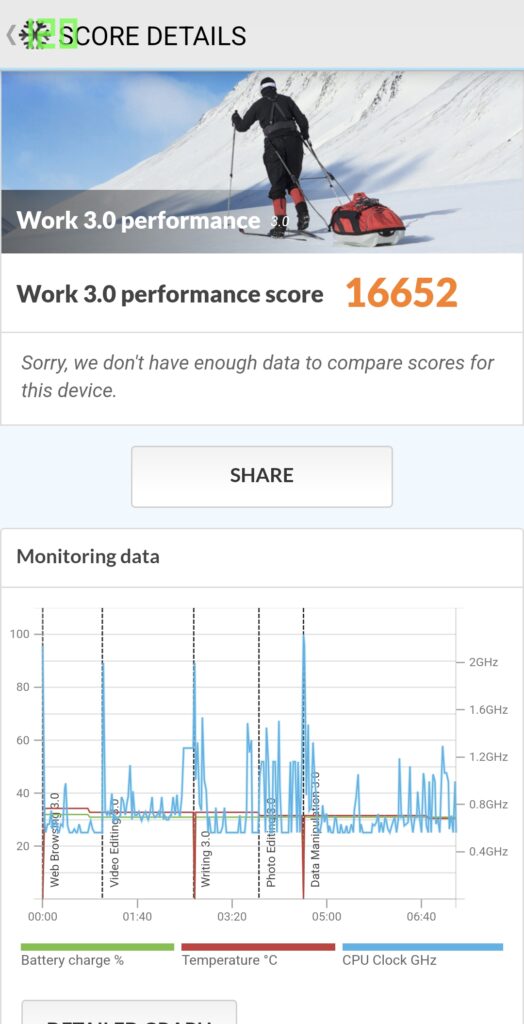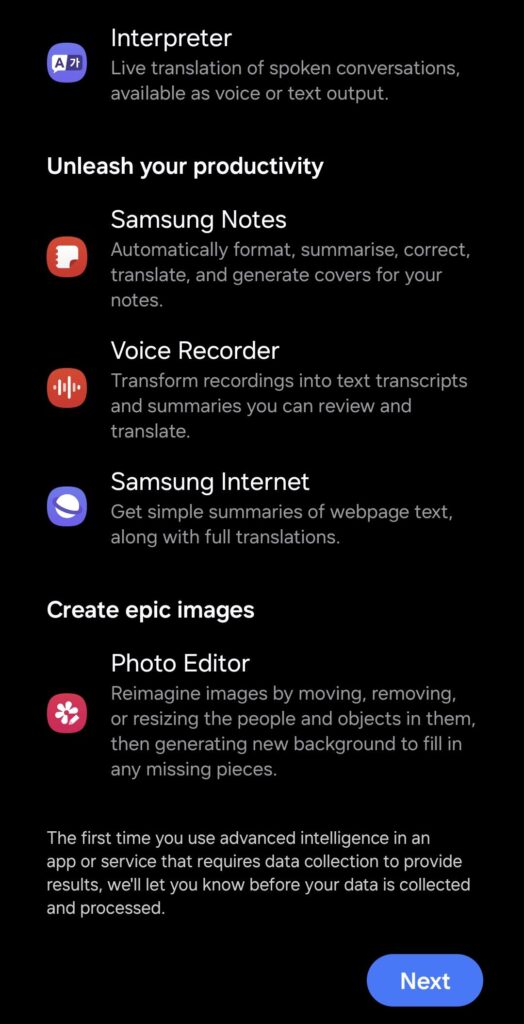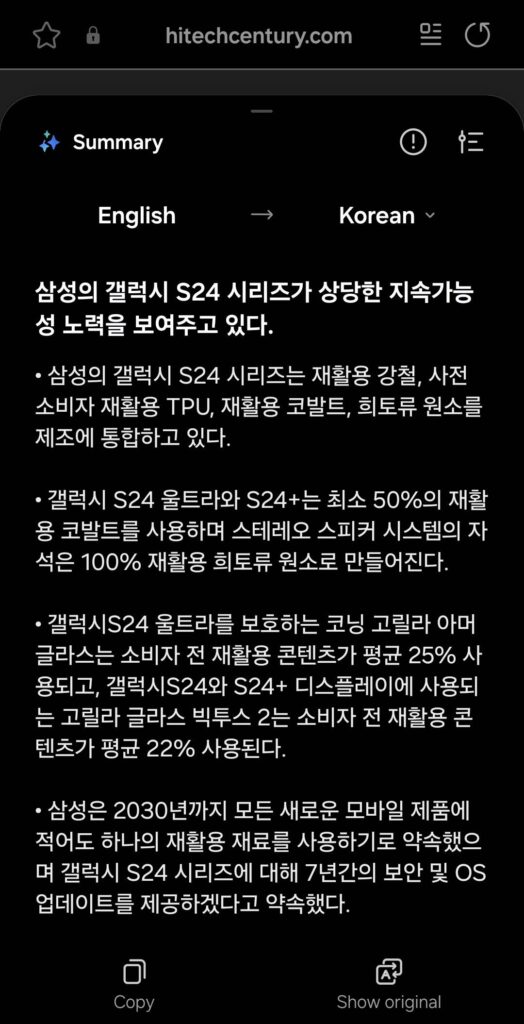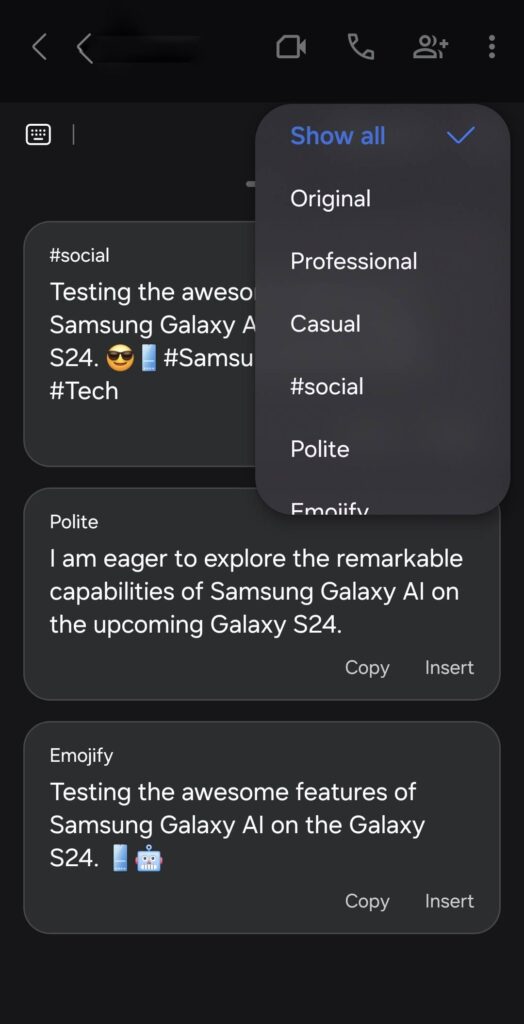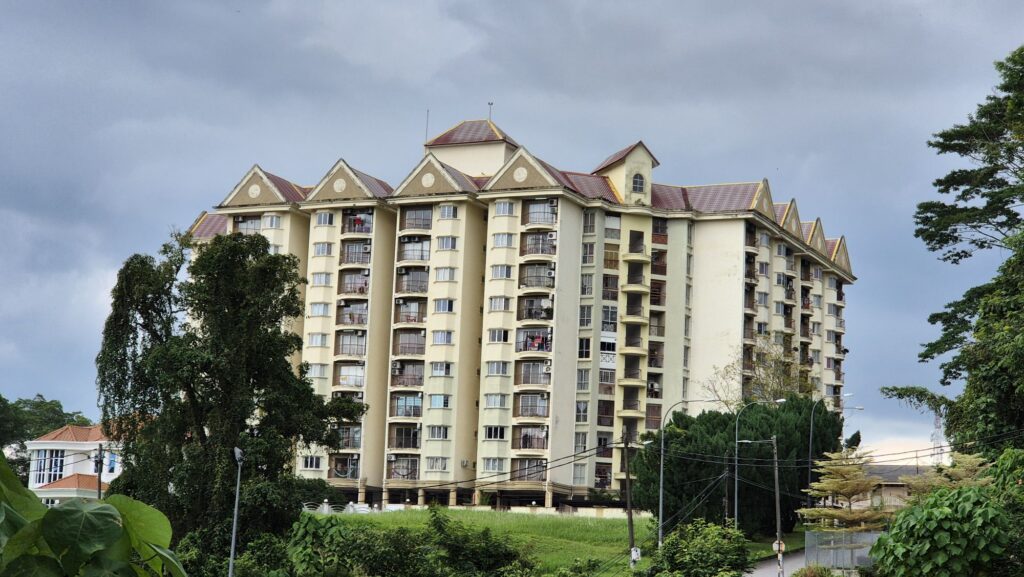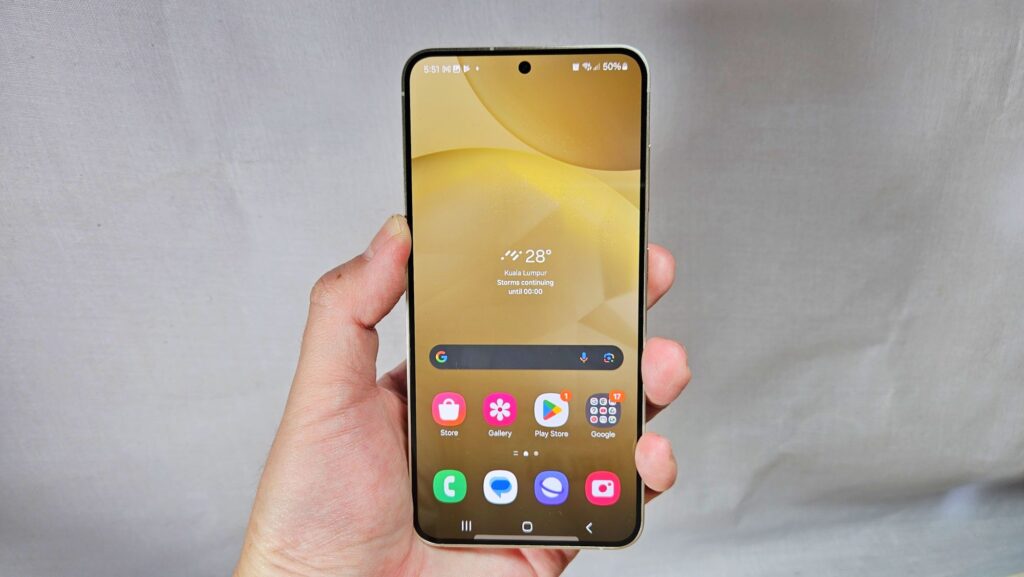
Samsung Galaxy S24 Review (Exynos 2400) – Mighty Mini Marvel AI phone Tested
As the smallest and most affordable of the trio of new Galaxy S24 series flagship phones, the Samsung Galaxy S24 hosts a number of novel features that elevate it beyond the customary annual performance and hardware refresh, chief among them being the fact they are the first AI phones available in the market featuring Samsung’s own Galaxy AI baked in to accomplish a number of useful tasks.
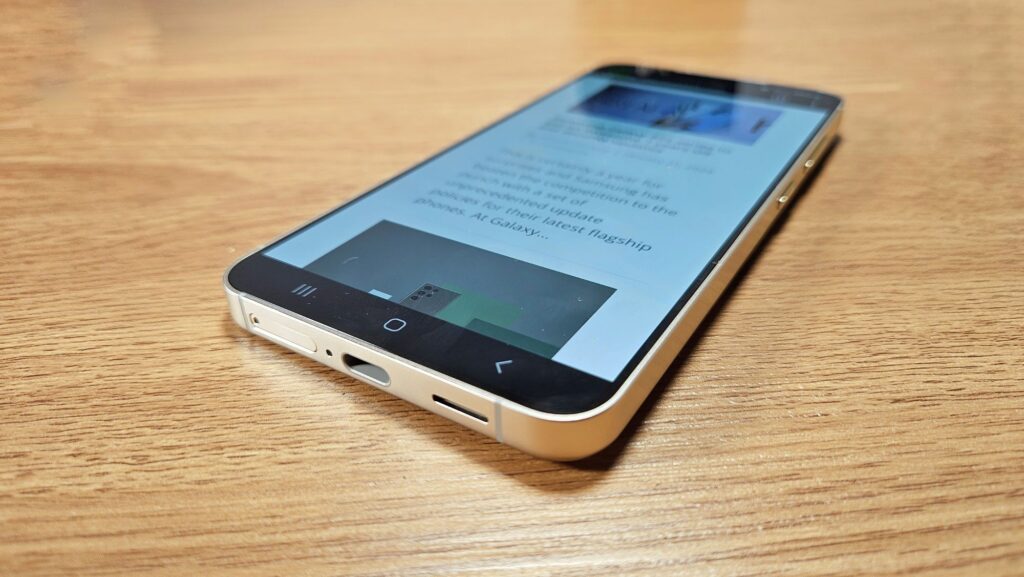
We shared our first impressions at launch and after field testing it, here’s our Samsung Galaxy S24 review where we share if this pint sized powerhouse is worth your money.
Samsung Galaxy S24 Review – Performance, Specifications and Benchmarks
Table of Contents
In terms of hardware, our Samsung Galaxy S24 review sample runs on the new Exynos 2400 processor paired with fast 8GB LPDDR5X RAM and, for the Malaysia market, your choice of either 256GB or 512GB UFS 4.0 storage.
On top of the new processor, the most definable differences for the Galaxy S24 compared to its predecessor the Galaxy S23 is its improved display which uses thinner bezels, enabling it to be 0.1-inches larger while offering improved brightness and an adaptive refresh rate.
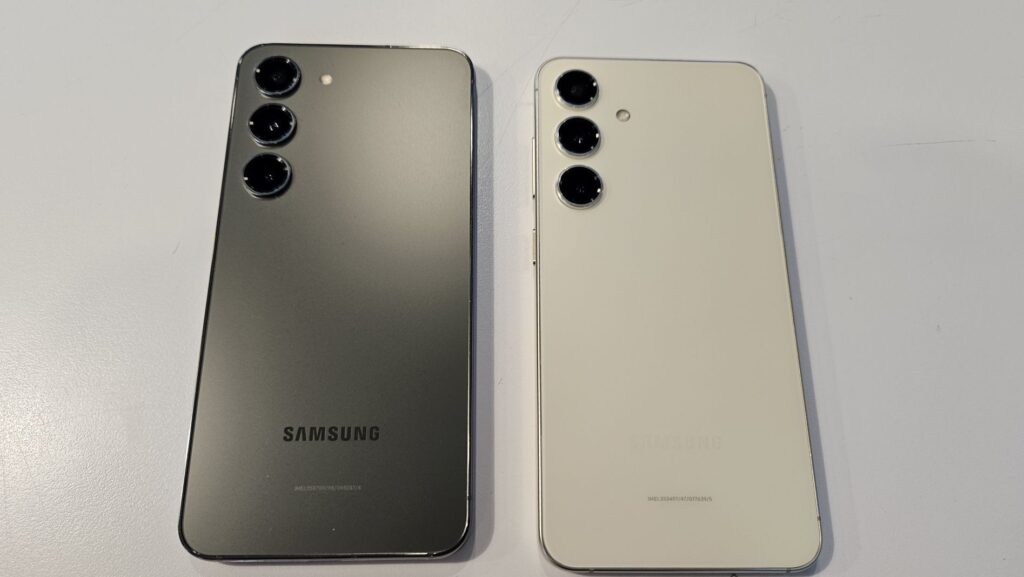
Samsung Galaxy S24 Review – The Galaxy S24 (right) has similar dimensions to the Galaxy S23 (left) but has significant improvements including a brighter display, an improved processor, a larger battery and, of course, Galaxy AI
The display itself is a 6.2-inch Dynamic AMOLED 2X display that uses an LTPO panel this time around to offer an improved 2,600 nits peak brightness and an adaptive refresh rate of 1-120Hz on top of 100% DCI-P3 colour gamut and HDR10+ support for compatible HDR content. The older Galaxy S23 managed a less efficient 48-120Hz refresh rate and had a lower 1,750 nits peak brightness.
The cameras are relatively similar in setup to the Galaxy S23 save with more imaging tricks via the new ProVisual engine and better 8K video zoom with the most important upgrade being a slightly larger battery at 4,000mAh versus its predecessor’s 3,900mAh. Unfortunately, the Galaxy S24 still sticks to 25W wired fast charging. A faster charging speed would have been welcome.
The use of an Exynos 2400 processor this time around is arguably a point of contention seeing its perceived shortcomings against the Snapdragon 8 Gen 3 which is only available in the top of the line and pricier Galaxy S24 Ultra.
After experiencing the Galaxy S24 since launch, the differences really aren’t significant from a day to day performance standpoint and mostly diverge when pitted in synthetic benchmark tests which don’t fully reflect typical phone usage in the field.
For the uninitiated, the Exynos 2400 is the successor to the prior Exynos 2200 which saw service in the Galaxy S23 FE which was released last year as well as selected versions of the Galaxy S22 Ultra in other regions. The Exynos 2400 employs a deca-core that implements a tri-cluster architecture built on a 3rd generation 4nm process.
The design consists of a single Cortex-X4 core running at 3.2GHz, five Cortex-A720 cores with two running at 2.9GHz and three at 2.6GHz as well as a quartet of Cortex-A520 cores running at 1.95GHz paired with a Xclipse 940 GPU.
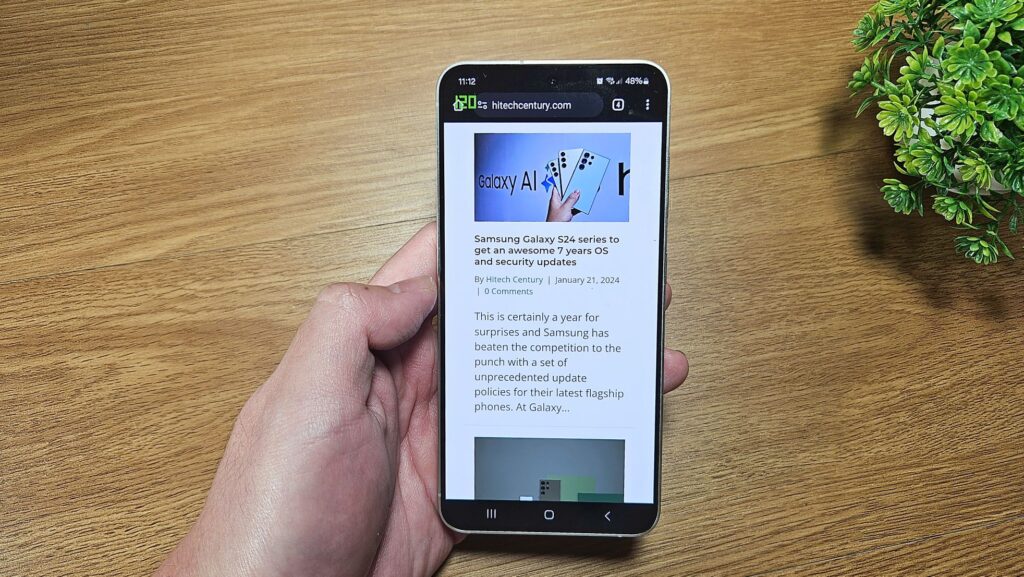
Samsung Galaxy S24 Review – The display offers 2,600 nits peak brightness and has a 1 -120Hz adaptive refresh rate which makes it a delight to use for work, reading and gaming
Of note is that the SoC itself implements what Samsung refers to as a Fan-out Wafer Level Package (FOWLP) that improves heat dispersion and in turn ensures better sustained performance under heavy loads. On paper, the Exynos 2400 is rated to offer 70% faster performance and a 40% faster GPU than the prior Exynos 2200 which is quite a performance boost.
To keep the processor cool under sustained loads, Samsung has also implemented another critical improvement – a 1.5x larger vapour chamber compared to the older Galaxy S23 that also ensures better sustained performance.
Running under the hood of our Galaxy S24 review sample is the latest Android 14 with OneUI 6.1. The phone has a guaranteed 7 year OS and security update all the way to 2031 and through to Android 21 which represents exceptional value if you’re in it for the long haul.
Of note with OneUI 6.1 is the ability to assign additional virtual RAM off the onboard storage in 2GB increments that they’ve dubbed as RAM Plus all the way up to 8GB of virtual RAM. Here’s how our Galaxy S24 review unit stacks up on paper…
| Price | RM4,099 ( 8GB RAM/256GB), RM4,899 (8GB RAM/512GB) |
| Display | 6.2-inch Dynamic AMOLED 2X FHD+ display, 1080 x 2,340 pixels resolution 1-120Hz adaptive refresh rate, HDR10+, 2,600 nits peak brightness, 19.5:9 ratio |
| Processor | Exynos 2400 (Malaysia) |
| OS | Android 14 w/ OneUI 6.1 (7 year OS and security updates) |
| Memory | 8GB LPDDR5X, 256GB storage (review unit) or 512GB (variant) |
| Camera | 50MP F/1.8 w/ OIS and Dual Pixel AF, 12MP F/2.2 ultra wide angle camera, 10MP F/2.4 w/ 3x optical zoom [rear] / 12MP F/2.2 w/ Dual Pixel AF[front] |
| Battery | 4,000mAh w/ 25W wired, 15W wireless, 4.5w reverse wireless charging |
| Size/Weight | 147 x 70.6 x 7.6mm / 168g |
Some interesting facts to note with the Galaxy S24 is that it is capped to WiFi 6E speeds whereas its larger siblings support the new WiFi 7 standards and it also lacks Ultra Wideband (UWB), presumably to keep costs down.
For the purposes of our Galaxy S24 review benchmarks, I’ve ramped it up to 8GB of RAM Plus virtual RAM. At the time of writing, the phone was updated to the latest firmware with build IP1A.231005.007.S921BXXU1AWM9. Here’s how our Galaxy S24 review sample stacks up in synthetic benchmarks…
| 3D Mark Solar Bay | 4,704 |
| 3D Mark Solar Bay Unlimited | 4,867 |
| 3D Mark Wild Life Extreme | 2,193 |
| 3D Mark Wild Life Extreme ULTD | 2,211 |
| 3D Mark Wild Life | 7,753 |
| 3D Mark Wild Life Unlimited | 7,930 |
| Geekbench 6 Single Core | 1,956 |
| Geekbench 6 Multi Core | 6,477 |
| Geekbench 6 OpenCL | 10,146 |
| Geekbench 6 Vulkan | 10,545 |
| PCMark Work 3.0 Performance | 16,652 |
| PCMark Battery Life | 14 hours 54 mins |
In terms of overall performance, the Exynos 2400 compares favourably with the Snapdragon 8 Gen 3 for Galaxy across benchmarks with slightly better GPU scores across with the latter enjoying better overall CPU performance by a slight margin.
In the Solar Bay Stress Test unlimited benchmark our Galaxy S24 review unit got 6,846 points for its best loop score, bottoming out at 6,300 for the lowest loop score while offering an excellent 92% in stability under load with temperatures kept within a tolerable 38°C to 42°C.
Synthetic benchmarks typically aren’t a fully accurate means of addressing actual usage in a smartphone but give an indicator of theoretical limits in its hardware. Under more practical usage scenarios, our Galaxy S24 review sample acquitted itself well.
The 8GB RAM and 8GB of RAM Plus virtual RAM allow for smooth performance across all standard tasks expected of a flagship phone with seamless, instant swapping between multiple apps and browser tabs and smooth gaming.

In extended gaming sessions, Diablo Immortal was able to run on high settings and at 120Hz while Call of Duty Mobile managed 60Hz on Very High graphic settings though it did exhibit a couple of odd freezes in between matches, likely due to unoptimised firmware. Genshin Impact was also able to tackle 120Hz on medium graphics and a low 30fps.
As a platform for general gaming, it’s a solid contender for most games and even after a couple of hours of heavy gaming, internal temperatures left the chassis warm but still wieldable without issue.

The improved Dynamic AMOLED 2X display itself is excellent this time around and users are able to set a new Adaptive Colour Tone toggle that uses the phone cameras to dynamically adjust the display’s colour temperature for a more natural viewing experience.
During testing, it managed to get as low as 24Hz when viewing static content like web pages and shots , ramping up to the full 120Hz when navigating the menus with screen brightness that surpasses its predecessor by a comfortable margin for use even under direct sunlight. The paired stereo speakers are also up to snuff with sufficiently loud volume for gaming and a spot of Netflix or two on the go.
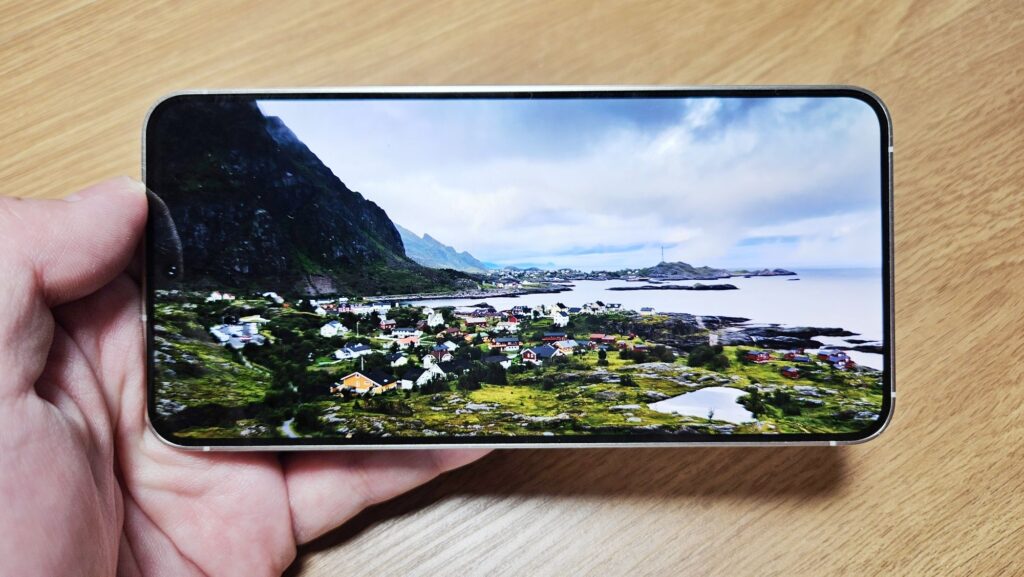
Battery life for our Galaxy S24 review unit was excellent and it easily lasted a day and a half of heavy use with liberal usage of the camera, gaming and web browsing too.
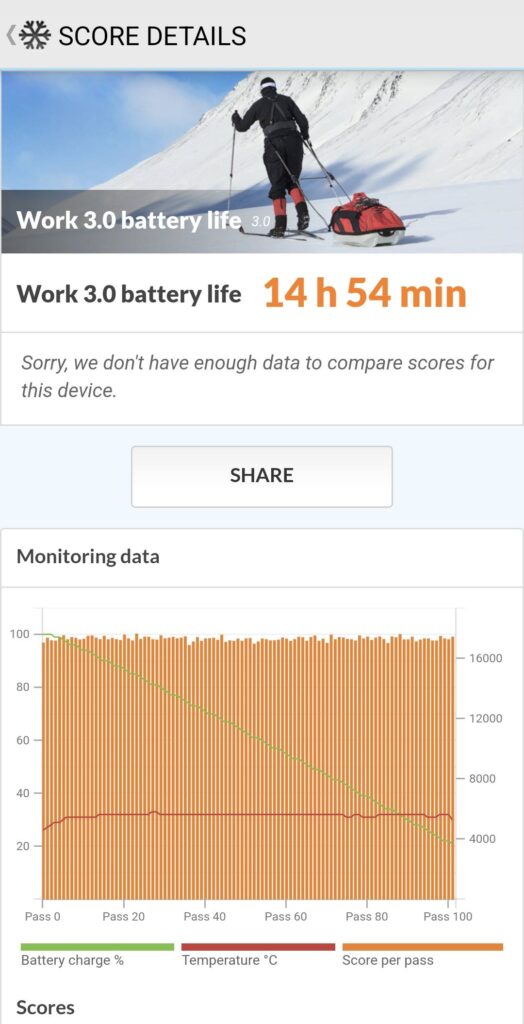
PCMark’s battery life test also yielded a respectable 14 hours and 54 minutes, just shy of a full 15 hours. Unfortunately, charging speeds are still very conservative at 25W wired charging though it does the job with about an hour and 30 minutes for a full recharge.
Samsung Galaxy S24 Review – How does Galaxy AI perform
General usage aside, as a first generation AI phone, the Galaxy S24 and its Galaxy AI are able to accomplish a number of helpful tasks. The live translation mode offers real time translations for phone calls or face-to-face conversations of the more popular languages around the world including Korean, Vietnamese, Japanese, Thai and Mandarin Chinese though it doesn’t handle Bahasa Malaysia for now nor is it able to handle Chinese dialects like Cantonese or Hokkien but its capabilities as it stands are impressive.
There’s a few hoops to jump through first as you’ll need to download the required language pack first but on the bright side, all the data processing is handled on the phone itself and is useful if you’re going on holiday in a country with supported languages.
Of more practical use is Galaxy AI’s Chat Assist where it can take a given text or Whatsapp message and rewrite the tone to offer a more casual, more polite, more formal or emoji-laden message. This has mixed results though and the AI refuses to translate colourful language or more serious messages.
- Samsung Galaxy S24 Review – is able to translate websites viewed in the Samsung Internet browser
- Samsung Galaxy S24 Review – Galaxy AI can summarise text to make it easier to skim through
- Samsung Galaxy S24 Review – The new Galaxy AI allows users to alter the tone of their messages to taste
Another more useful application of Samsung’s Galaxy AI is applicable especially for students and mobile workers is the ability to neatly format, clean grammar and typos as well as summarise notes taken on their inhouse Samsung Notes app.
It’s even able to tackle transcriptions of audio recordings like tedious work meetings and lectures into a text transcript, which can then be translated into other languages and formatted neatly to boot. Not all accents are neatly transcribed but it lets you get a head start on the grunt work. For prolific web browsers short on time, Galaxy AI is able to interact with the Samsung Internet browser to also summarise the contents of a web page along with translations.
The most interesting upgrade for Galaxy AI is Samsung’s collaboration with Google to create a ‘Circle to Search with Google’ feature that lets you hold down the home button on the phone to let you circle anything you want to search for, be it an image or text. Results vary with search results primarily oriented towards things to purchase though it’s able to recognise more famous personalities in a pinch.
Galaxy AI is also able to tackle image processing too with the ability to slow down existing footage and intelligently edit images like removing photo bombers or moving a person or object around in an image as well as remove reflections in a given shot though all of this is only accessible via Samsung’s own Gallery app for now.
It’s early days but there’s quite a bit of hopeful potential and it’s only going to get better with future updates though the fine print states that Galaxy AI is currently free for the next two years until 2026.
Galaxy S24 Review – Cameras
Much like the Galaxy S23 series, the Galaxy S24 hosts an identical camera setup as the Galaxy S24+ and will deliver similar results though the Galaxy S24 Ultra uses an entirely different and more powerful camera array.
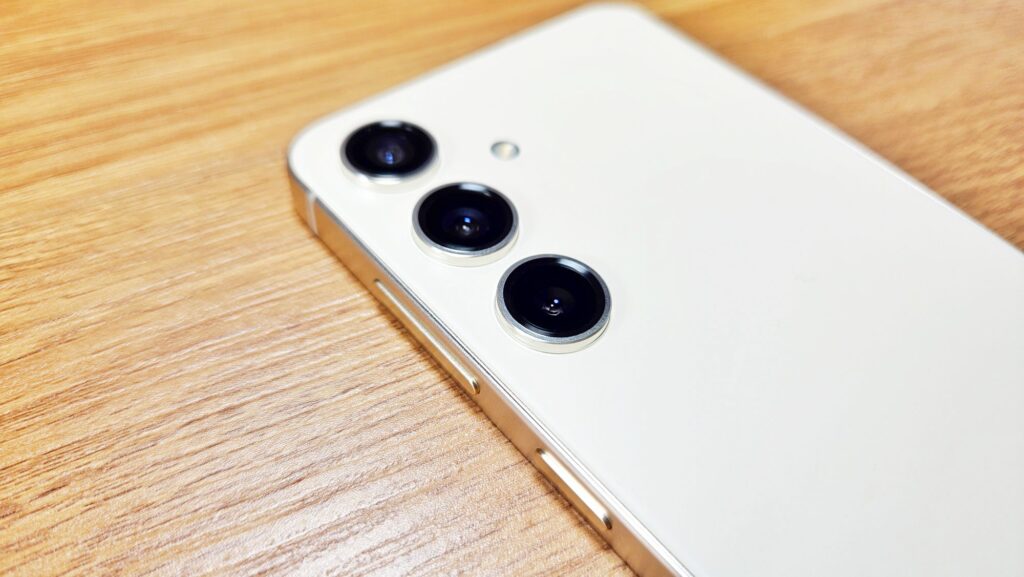
This time around, the key updates are an updated ProVisual Engine and a host of Galaxy AI-powered features that help with better low light computational photography and a host of unique editing tricks in post like a Generative Edit to fill in empty space, moving objects and deleting them to taste and a super slow Instant Slow-mo mode that adds additional frames for slowed down video.
Another key update is enhanced Super HDR support so that third-party apps can take advantage of the camera enhancements on a selected number of apps like Instagram, Snapchat and TikTok for better quality shots in each respective app.
Our Samsung Galaxy S24 review sample hosts a rear triple camera array built around a primary 50MP F/1.8 camera with optical image stabilisation and Dual Pixel autofocus, a secondary 12MP F/2.2 ultra wide angle camera and a 10MP F/2.4 telephoto camera with 3x optical zoom. Improvements here are primarily towards computational photography enhancements with better low light, steadier shots and enhanced 8K video capture with up to 5x zoom.
For stills the rear camera array is able to offer lossless 3x optical zoom and up to 30x digital zoom for stills and 12x zoom for 4K@60fps videos and below with 5x zoom for 8K video capture. Up front, the Galaxy S24 hosts a 12MP F/22 selfie camera that has Dual Pixel autofocus with the ability to capture up to 4K@60fps video and stills.
In daylight conditions, the Galaxy S24 acquits itself extremely well with consistent colour rendition from the ultra wide, primary and telephoto camera with well saturated colours and great detail all the way to 30x digital zoom.
Shots in dimly lit conditions do surprisingly well too with slightly improved low light performance compared to its predecessor in terms of salvaging details from shadows and dynamic range at up to 3x zoom. Beyond that, with shots out to 30x zoom, images understandably look soft and the NPU comes into play to sharpen images and whatnot to a semblance of detail.
Videos at 8K@30fps are impressive to behold but still impractical to edit and view seeing their immense size though the option of having 5x zoom by cropping the main camera sensor does offer some creative options should the need arise. Most users will likely default to the more practical 4K@60fps which offers excellent results with great footage for most content creators.
The front selfie camera which is identical across the Galaxy S24 series offers accurate skin tones and good retention of details with better low light performance this time around compared to the S23 along with heavier use of AI to increase the depth of field effect in shots to achieve a more natural looking effect as if it was captured on a DSLR. This setup is more than sufficient for all but the most demanding streamers or narcissists though more specialised competing models with larger front-facing cameras do exist.
Should you buy the Samsung Galaxy S24?
The Samsung Galaxy S24 features a fantastic display, solid overall performance and a great set of cameras too. While existing owners of the Galaxy S23 may not find it as compelling an upgrade, those looking for a flagship compact phone and those looking to hop on the AI phone bandwagon will find that this compact powerhouse acts as the most affordable means to gain access to Galaxy AI.
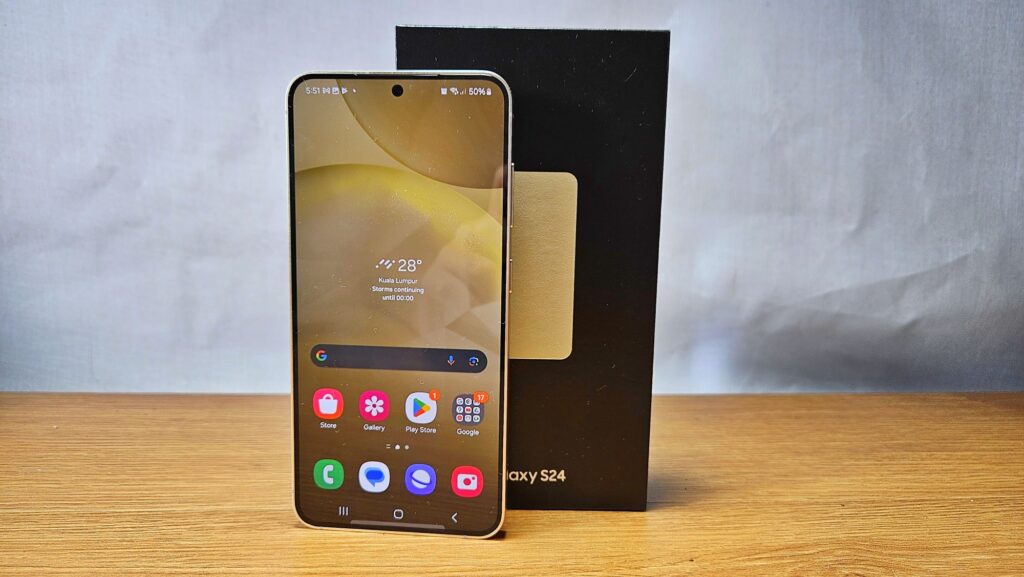
If you’re looking for the top of the line model with the absolute best, most powerful camera hardware that Samsung can offer for 2024, the Galaxy S24 Ultra beckons though be prepared to pay a pretty penny. For those in between, the Galaxy S24+ is also an option worthy of consideration to embrace the AI phone phenomenon. If you seek a compact flagship phone, the Galaxy S24 ought to be tops on your list.

Samsung Galaxy S24 review courtesy of Samsung Malaysia. For more details, check out Samsung’s official online store at https://www.samsung.com/my/smartphones/galaxy-s24/
Samsung Galaxy S24 (Exynos 2400)
-
Display
-
Performance
-
Cameras
-
Battery Life
-
Value
Samsung Galaxy S24 (Exynos 2400)
The Samsung Galaxy S24 hosts a number of distinctive advantages that make it the definitive compact flagship phone to get at this point in time. You get a tougher Armor Aluminum 2 chassis, a brighter and more power efficient display, excellent battery life, surprisingly good performance from the Exynos 2400 chipset and distinctive advantages conferred by the new Galaxy AI.
Pros
Exceptionally long 7 years security and OS update policy, vibrant and sharp display with adaptive refresh rate, good performance, superb battery life, great camera, useful Galaxy AI features
Cons
No UWB, limited to 25W wired fast charging, only has 8GB RAM compared to contemporaries, uncertain Galaxy AI future after 2 years


